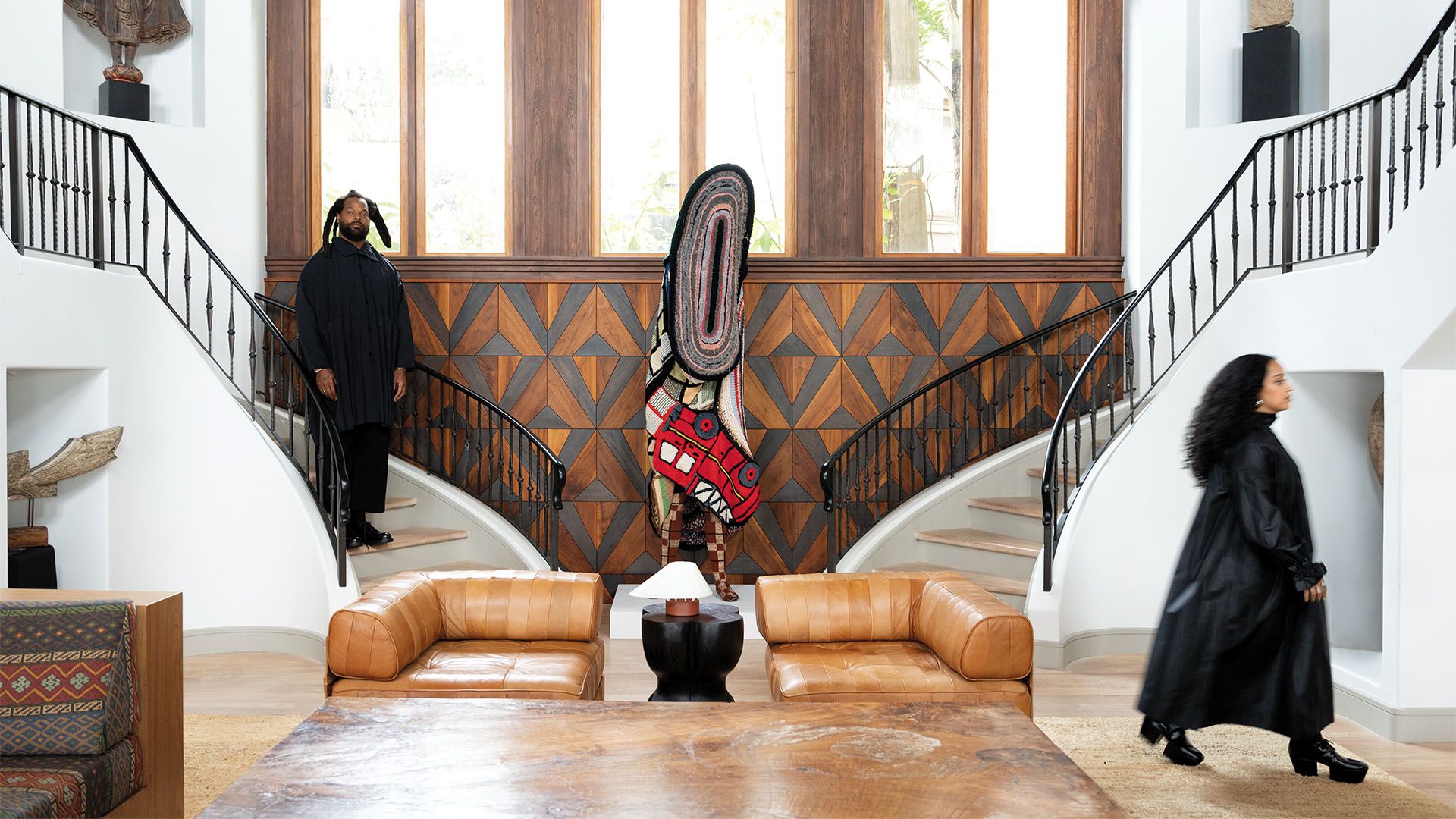Inside the creative practices of spatial designer Michael Bennett and artist Pele Bennett. Together, they strive to foster spaces that strengthen community connections through furniture, architecture, and event series.
Images by Michelle Mishina
Sitting across from Michael Bennett, the NFL Super Bowl champion and three-time Pro Bowler turned furniture and architecture designer, it might be tempting to think the transition from sports to art to be some sort of seismic leap. That somehow there’d be a wide gulf between a world of brute strength and bodies colliding to another of form, function, and gallery spaces.
But Bennett sets me straight, knowing what bush I was beginning to beat around by suggesting his entrance into the design world could seem on the surface like a completely new chapter of his life after retiring from football in 2020.
“I feel like sports is art,” he says. “I think in being a defensive end, there’s a lot of art in there. There’s abstraction in it. There’s movement. There’s spatial hierarchy. There’s everything: rhythm, skill, form.”
Football, he insists, involves profound mental agility, an aspect often sidelined by spectators who tend to focus on the overt strength displayed by its players. Being able to judge a play, break it down, and move in a certain way using another man’s body in order to navigate the field theorizes that football is less about being strong than it is about setting up and negotiating movement in space. “I’ve always been an artist in that way,” he says.
We are sitting at the corner of a long communal table in the open air lānai of his home, a sweeping view of the eastern O‘ahu shoreline in one direction and the Honolulu cityscape in the other. A cool trade wind blows through the space and the fibrous material of a mixed media piece by Lauren Halsey, one of the many African American artworks on the walls, dances subtly. The sound of his daughters’ laughter bounces playfully off the walls somewhere within the large home.


Bennett seems relaxed and at ease in this familial space, but every word he utters is assured and deliberate. One gets a swift sense that he is an incredibly thoughtful, introspective person, even if throughout his 11-year NFL career he has been known for some comical gameday antics like his hilarious sack dances or that time he “borrowed” a police officer’s bike for a victory lap around the stadium field after his Seahawks beat the Packers in an NFC Championship game. Concurrently, Bennett is also known for his ongoing social activism. A generous humanitarian who has supported multiple organizations such as #iamtheCODE, which has sponsored more than 100 Senegalese girls into STEAMED education programs, Bennett is also a published author (Things That Make White People Uncomfortable, co-written with Dave Zirin) and an advocate for women’s rights. The Bennett Foundation, which he founded with his wife, artist Pele Bennett, educates and supports underserved children and communities around the United States and Africa.
But as for his design practice, attending architecture school at the University of Hawai‘i at Mānoa, and touring art installations and exhibitions around the country — this wasn’t something he just fell into after a prosperous professional football career. Bennett tells me that even as he was extensively traveling around the world in his twenties and early thirties, design and the urge to build something was always on his mind, even if he couldn’t quite express what that would be.
“I didn’t know how those things would play a role in what I would be doing in the future, but looking back, there were moments where I was in a forest, or somewhere, seeing something so beautiful — the way the shadows would hit something — but I didn’t know the terminology for it,” he says. “So, finding my own voice has been an interesting thing, because I’m still finding it, right?”
An athlete’s own process is often undersung, as far as Bennett is concerned, and he draws parallels between how one approaches sports and art-making. “There are so many parts working, trying to make one goal, to make one play, and most people don’t see the process of what it takes to get to that moment — the amount of work you have to do in the body,” he explains. “And the body is similar to architecture, right? For instance, when I think about my own body, and I think about architecture and the connection there, both are places that hold memories.”
I want people thinking about spaces in different ways.
Michael Bennett
Speaking of memory, Bennett confesses that that was a constant consideration when transitioning careers from football to design. “There definitely was this fear with CTE [chronic traumatic encephalopathy],” he says, referring to the progressive brain disorder linked to repeated head injuries and most commonly associated with former professional U.S. football players. “Will I not be able to use my brain fully? Will I only conquer the body? Or will I get an opportunity to conquer the mind? These were things I was thinking about as I was retiring, where it was like, I can’t be broken to the point where I won’t be able to put things that are in my mind out into the world and for them to become alive. You achieve these riches, but it comes with a cost,” he continues, “and it’s a quiet cost because you don’t know when CTE is going to sneak up on you.”
Never one to shy away from hard work, Bennett’s second act has proven nothing short of remarkable. After studying design at Seattle’s Heritage School of Design, he enrolled in the architecture school at the University of Hawai‘i at Mānoa, simultaneously showing his work in exhibits around the country in 2023, from the sculptural installation “Urban Decay” at Honolulu’s Hawai‘i Walls public arts festival to the cross-laminated timber gathering space Public Display at the NYCxDesign Festival. His latest exhibit, We Gotta Get Back to the Crib, unveiled January 2024 at Rebuild Foundation’s 6-Flat gallery in Chicago, showcased sculptural furniture works inspired by his family’s leg in the Deep South.
In 2020, Bennett founded Studio Kër, a design studio that explores African diasporic forms and languages through storytelling, architecture, and design. Through these engagements, his design practice strives to uplift Black agency and autonomy through community engagement and accessibility, and to be, as he describes it, “a well-rounded forum that has multiple outlets and mediums to express important narratives of Black identities and cultures.”
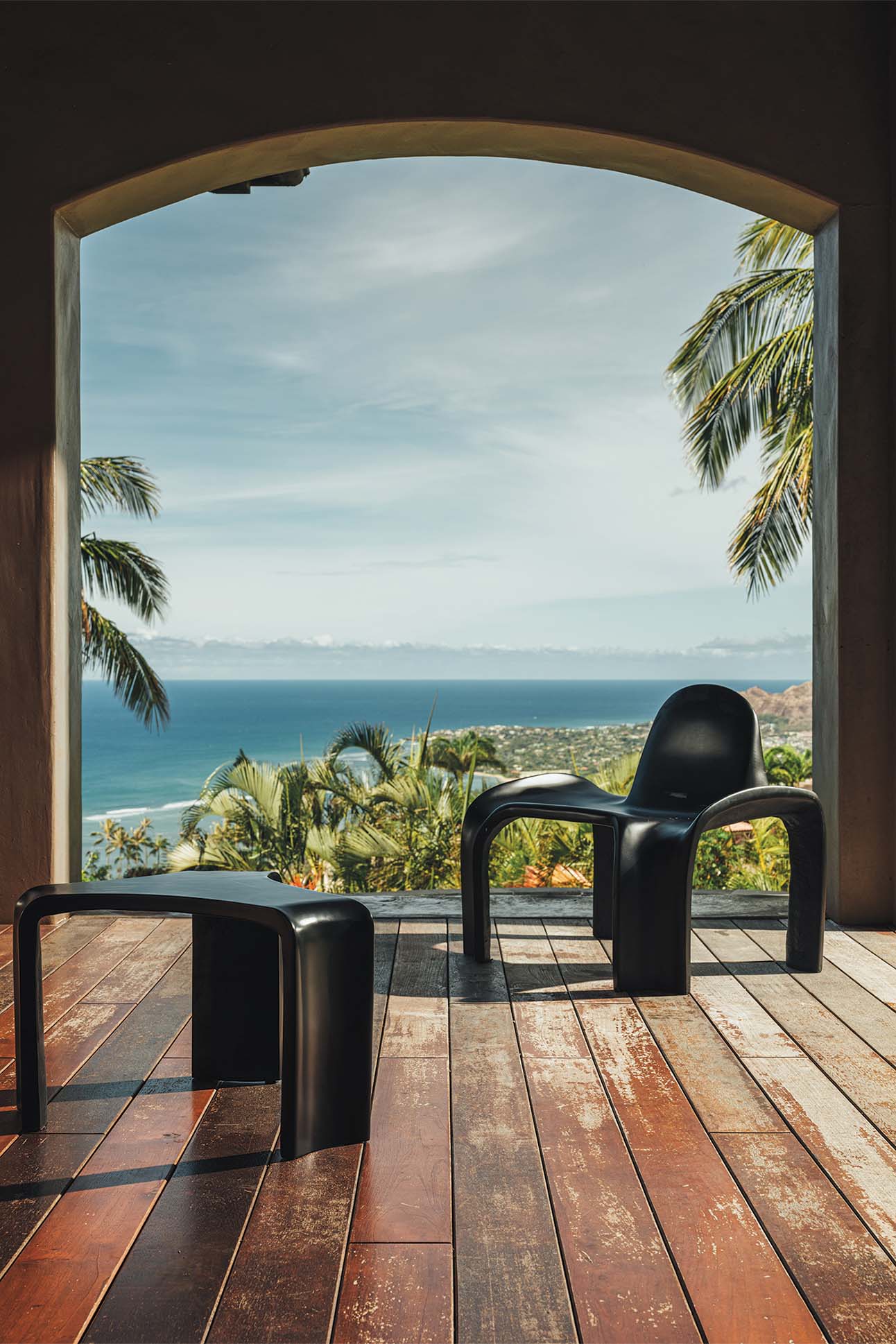

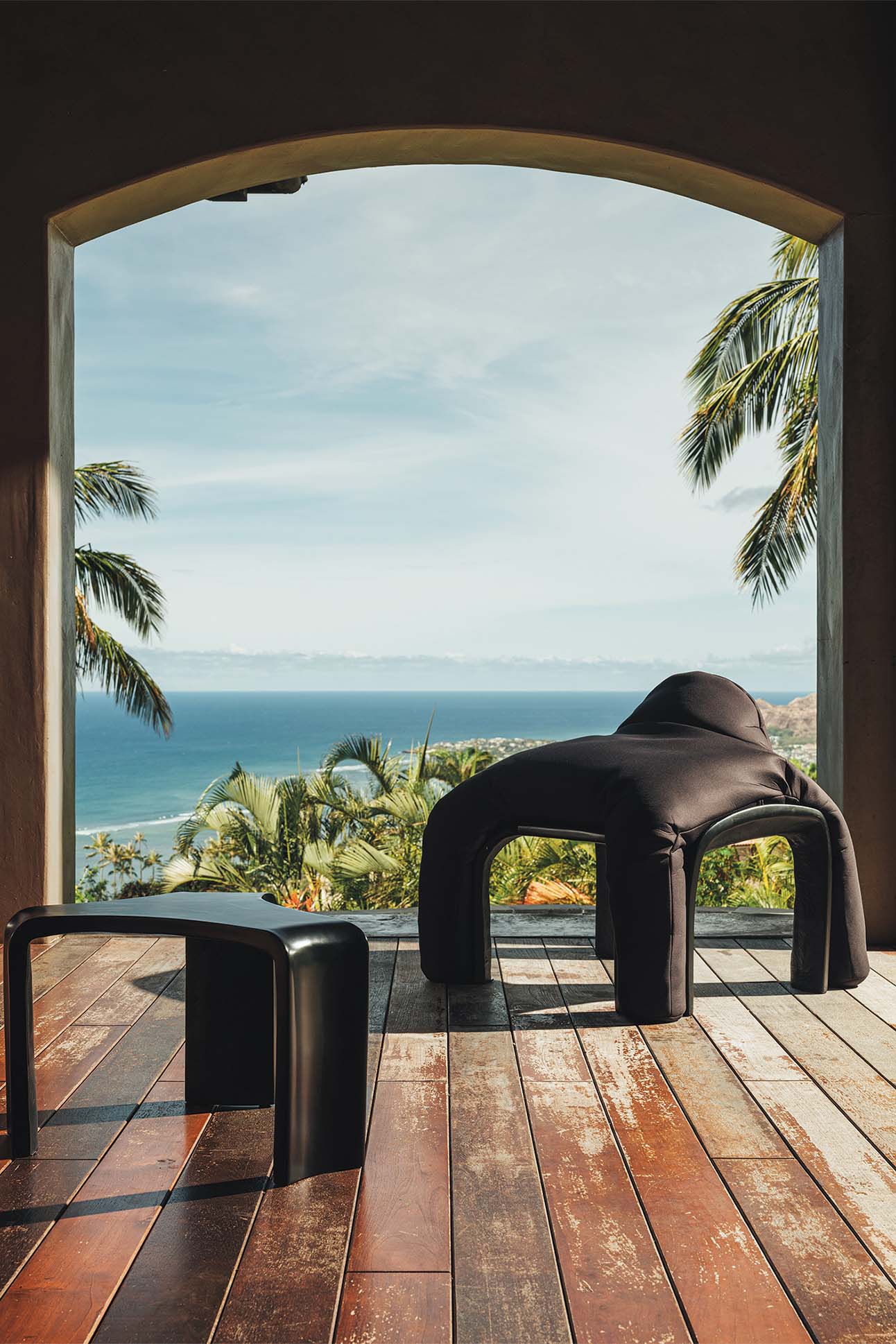

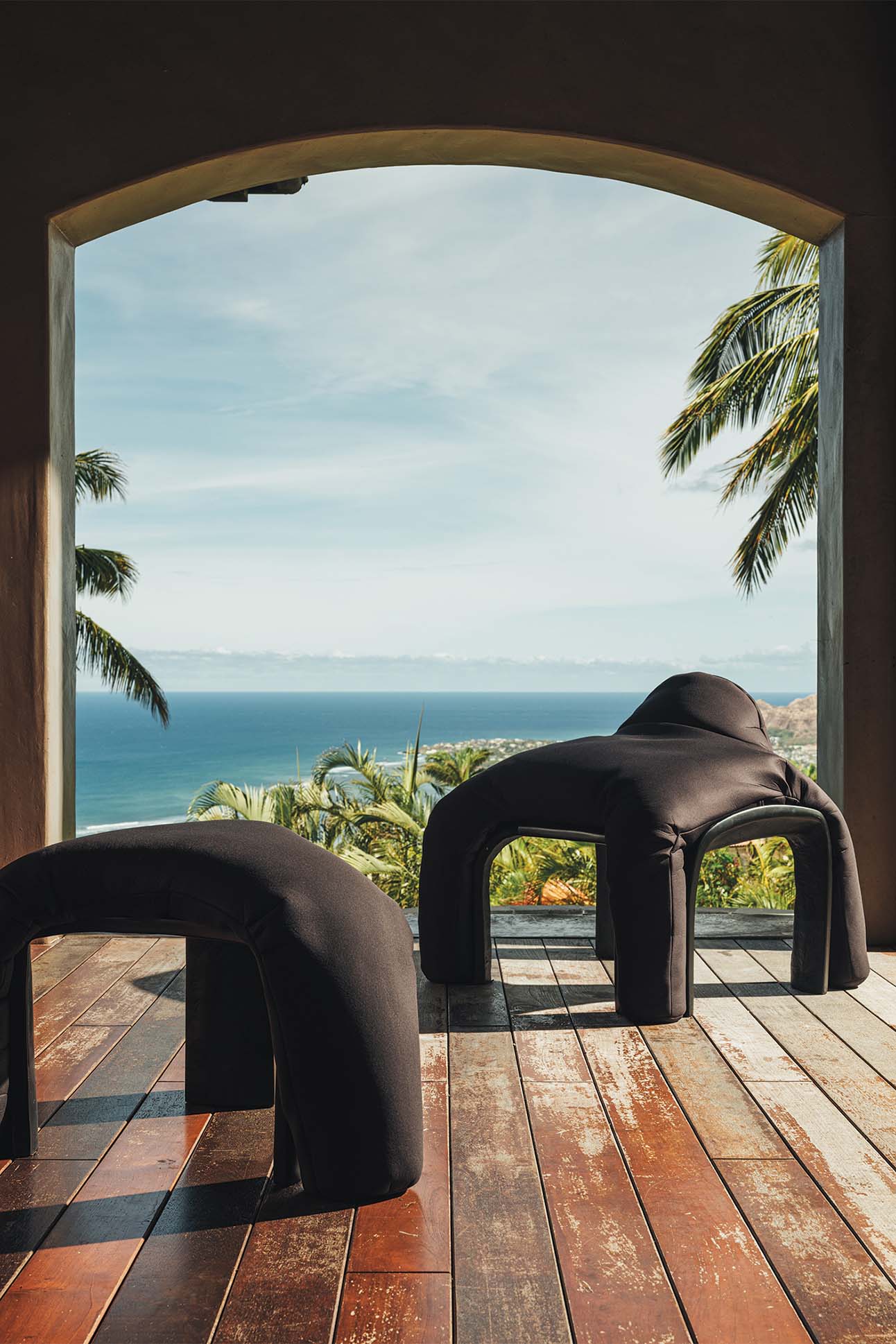

Gumbo chair & stool, 2022 fiberglass, linen, and upholstery. Images by Mark Kushimi.
“I want people thinking about spaces in different ways,” he explains. “I hope to build museums, I hope to build chapels — actually, no, I will build museums. I will build chapels…”
When Bennett refers to rethinking spaces, one area where he’d like them redesigned is within Black communities. In his eyes, there are plenty of areas that foster physical competition, but rarely any that cultivate a different type of inward wellbeing, a balance he’d like to see restored. “We talk about mental health now, but when I’m mapping an urban area, I see a lot of football fields, I see a lot of basketball courts — I don’t see any meditation spaces.” Bennett points to countries like Japan where there are a lot of public spaces that encourage an experience of serenity. “There are a lot of places where you can have a moment to connect to nature and get back into the senses,” he says. “I feel like nature and light is what fills us with joy and pushes us forward.”
Creating spaces where people can gather undergirds Bennett’s design practice. “Which is something I’m learning from her,” he says, gesturing to his wife, Pele, as she floats by the lānai. “You gotta see what she’s up to.”
Raised in Houston, the Bennetts met in high school and have been together ever since, now raising three daughters. Pele’s family, who have Samoan and Tokelauan roots, is from Hawai‘i, hence their home on O‘ahu and the connection her husband has developed with this land. Spending much of her childhood performing in her family’s traveling Polynesian dance production, Pele has been in the performing arts since she was five years old. She got into photography and painting over the years, as well as costume assemblage that draws on traditional Polynesian attire.
“I’ve gotten to see the evolution of Michael … the way he’s expressed himself in so many different spaces, and that’s been really beautiful,” she says, leading me into her and her husband’s art and design space, two connected rooms around the corner from the lānai. Around us, hardcover art books line shelves or rise in stacks like small towers. Fabric and feathers lay on a table for cultural adornments. Easels, moodboards, photos; a bird’s nest of creativity. Currently, the two projects that she’s most consumed by are the launch of her new Polynesian hair care line Vave’ao and an event series she hosts for entrepreneurs and innovators, often centering women creatives, at their home called In the Vā.
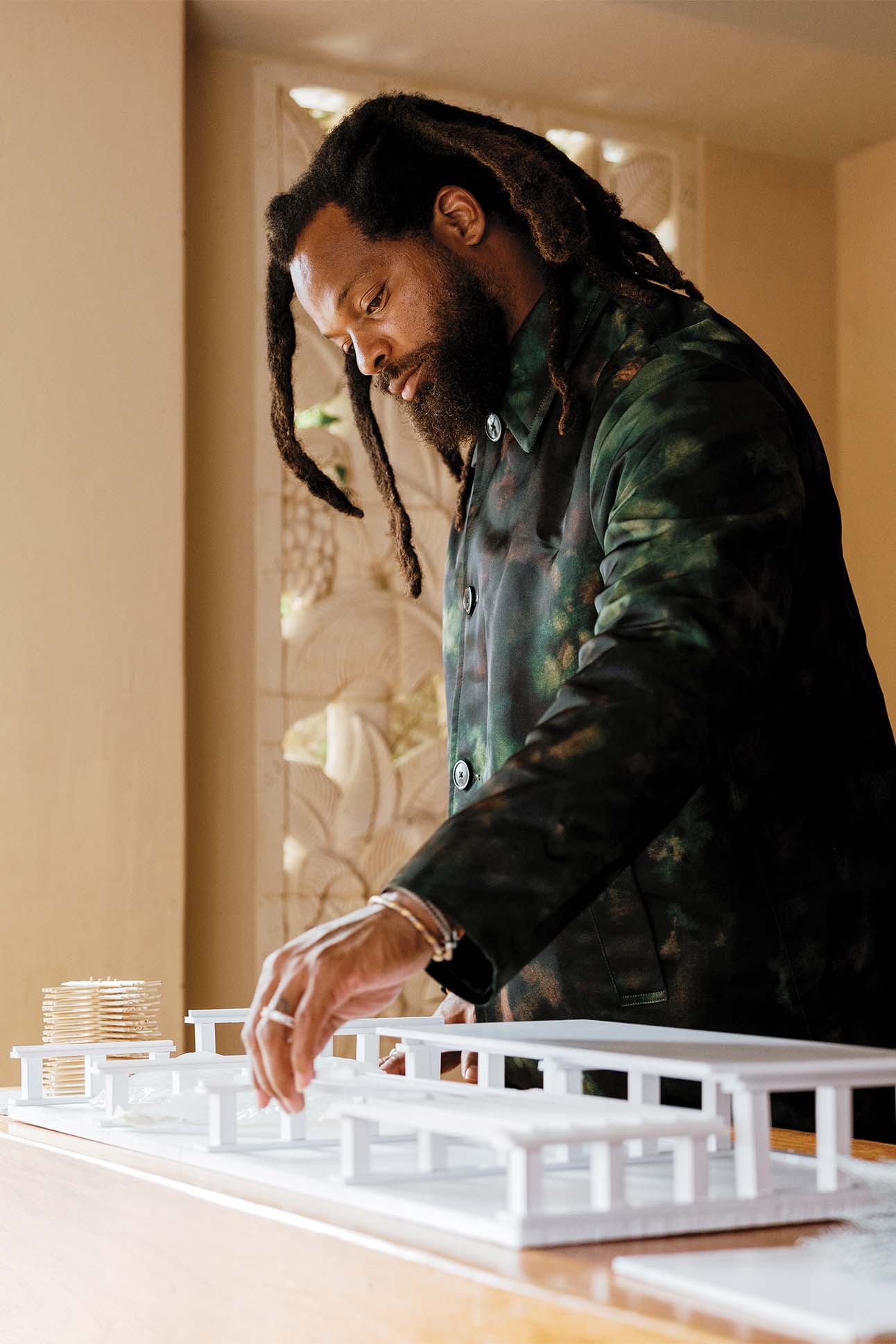

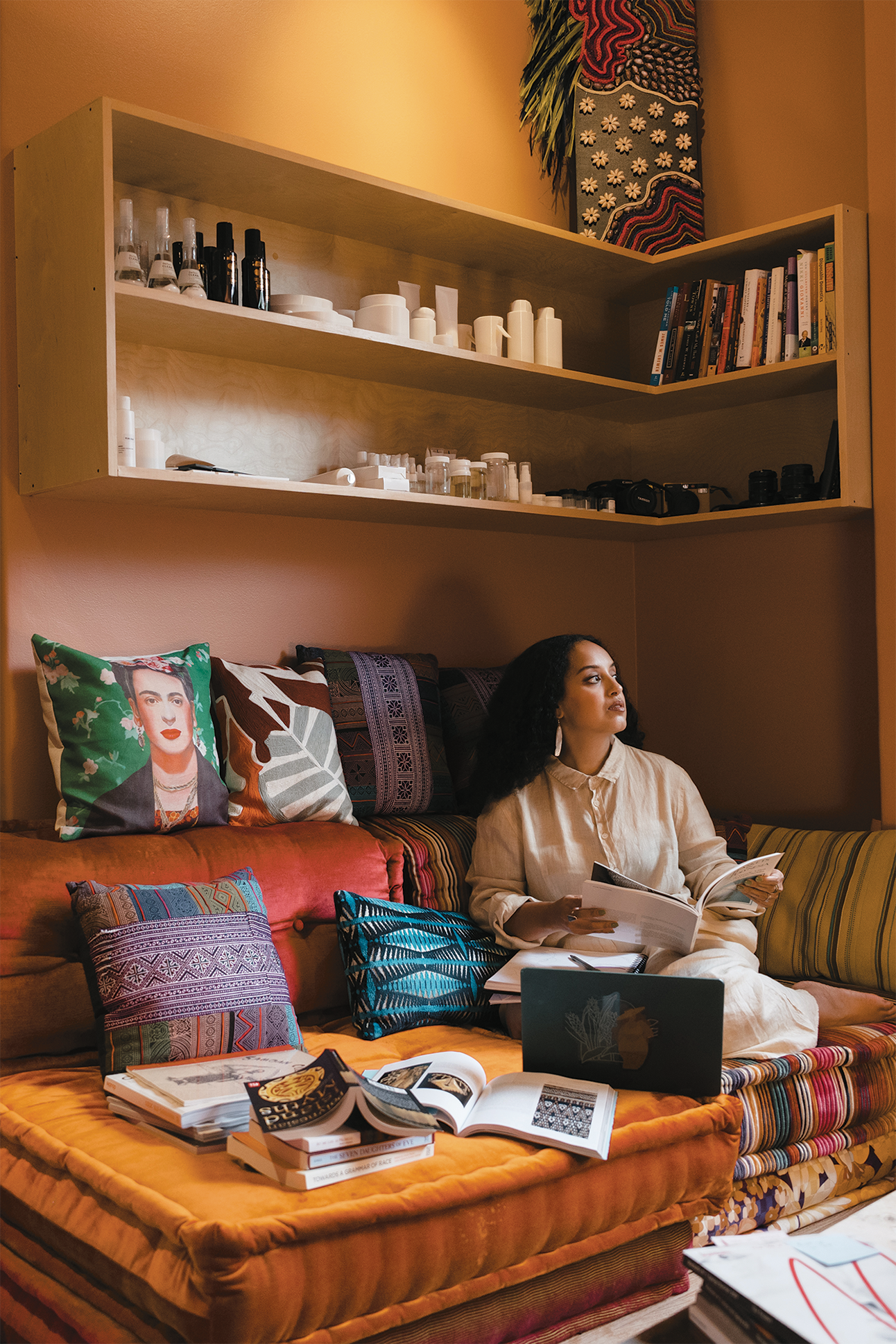

A Samoan term, also common in other Polynesian languages, vā is a concept of “the space in between,” Pele explains to me. “I think I’ve always felt a little vā, ‘in between.’ Like, ‘Is she white or is she Black? Is she from here or not?’ The In the Vā events we host are a place for people that might not live in the categories that people want to assign them. This is their space to form relationships and connections.”
Bennett passes through and nods, giving Pele a knowing smile. Earlier, he had told me that the word “communion” kept running through his mind when he was making the transition from pro athlete to designer, and it appears that he, as well as his wife Pele, strive to gather people through the communal spaces they design. His furniture pieces featured in We Gotta Get Back to the Crib, for instance, reimagine seating used to congregate, from the church-inspired Pew couch to the Gumbo lounge chair, while Pele’s In the Vā events gather an array of voices and professionals, providing them space to form community.
“Sometimes design can feel like a group of people in a space, drinking fine wine, talking about design, but they’re not in touch with the common person,” says Bennett. “And the people who are a part of the community can feel that.
A lot of people feel like, ‘This design wasn’t made for me.’ I want to make something that when a kid sees it, they want to make that. They want to change the sidewalk. If they’re tired of having no grocery stores in their community, I want them to stop waiting and know they can make one. That’s what I want to do with Studio Kër, to create that pipeline of thinkers.”

